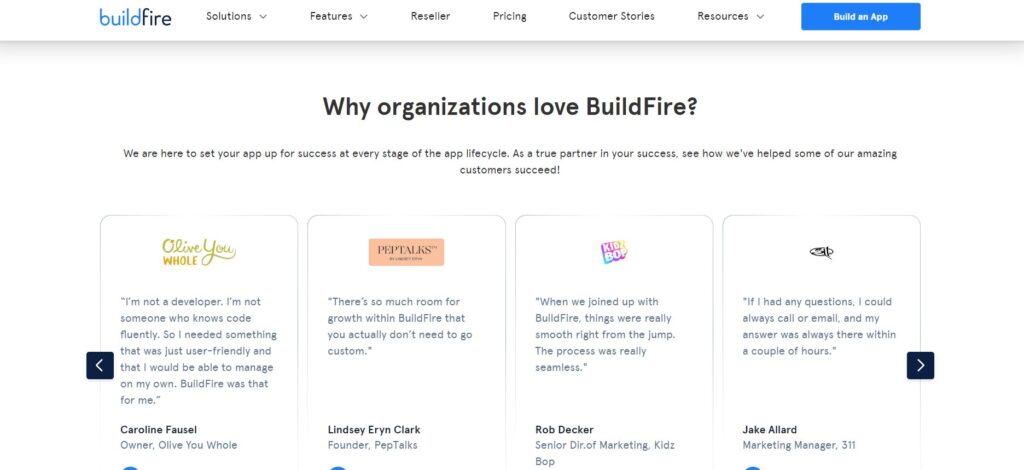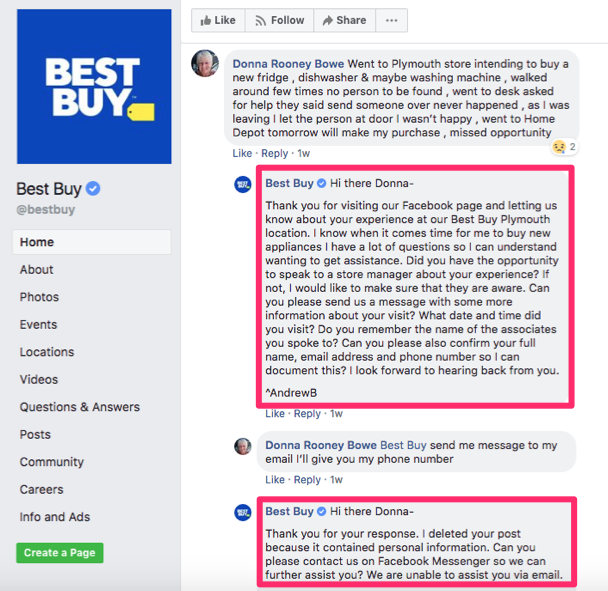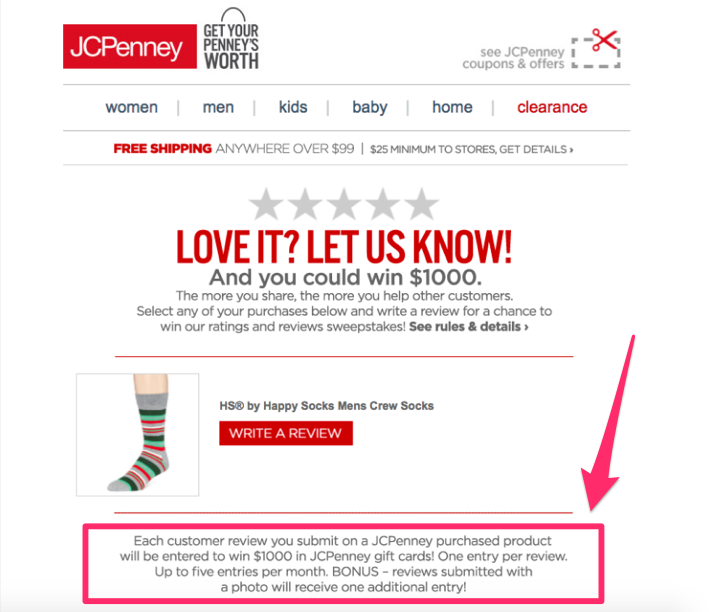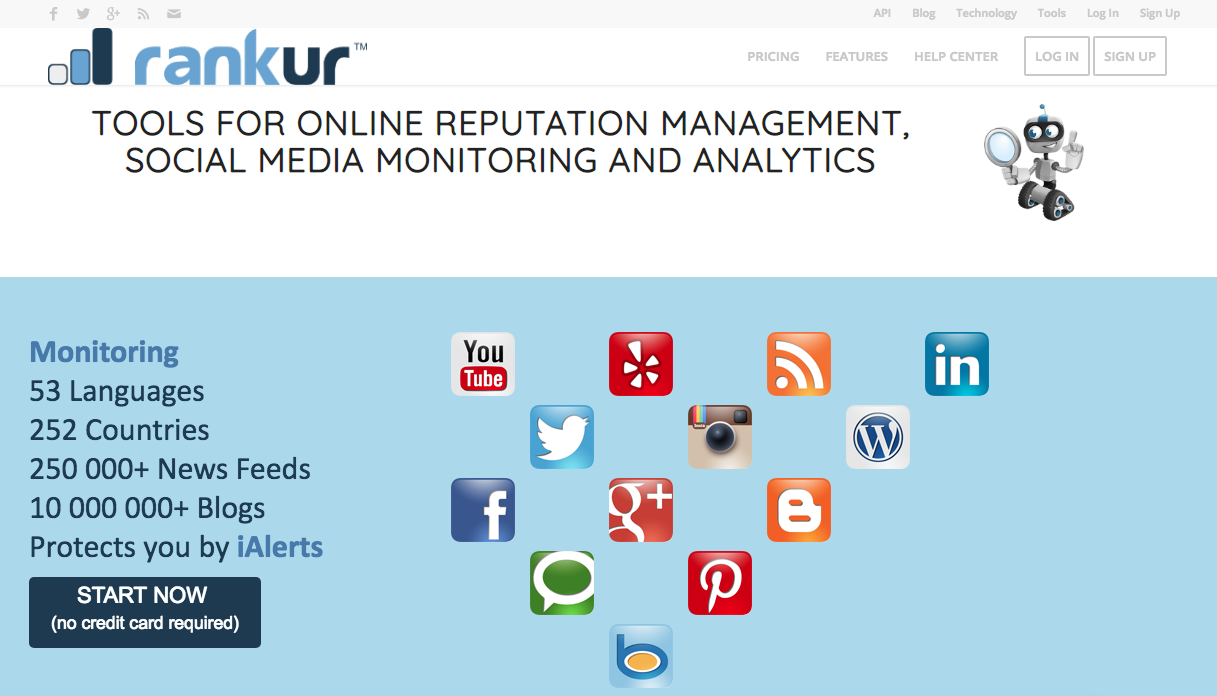Whether you have no reputation or a bad reputation, it’s already causing problems–whether you realize it or not. The good news? You don’t have to sit around and bear the weight of even more damage.
Here’s everything we recommend for improving your online reputation.
Work with a Reputation Management Expert
The easiest and fastest way to improve your reputation is with someone who does it day in and day out. There are dozens of reputation management firms to choose from.
They can help with everything we’re about to talk about so you don’t have to worry about learning how to do it, hiring in-house, or spending time on your reputation. From individuals and personal brands to small businesses and corporations, they offer custom strategies designed to get you where you want to go.
Create (Or Optimize) Your Website
Consider your website your online home. It’s the one piece of real estate you own, from the photos you use to the words you write. Sure, you can post on social media channels, but you’ll always be at the mercy of the algorithm.
Website builders are a great option if you just need something easy and simple.
You can start out with a basic site and a handful of pages. Over time, you can add to it. This may sound like it’s just for businesses, but that’s not the case.
Individuals can create websites, too. It’s a great way to show off your accomplishments and showcase a highlight reel of the things you’ve done. You can use it as a digital resume, a foundation for a personal brand, or however you’d like.
Expand Your Presence
Where can people find out more information about your business?
You can’t just rely on one platform for ratings and reviews. Your customers have different preferences for researching brands.
OK, so your business has a Facebook page. That’s great.
But that alone isn’t enough. Take a look at which review sites consumers trust the most:

Although these statistics might have changed slightly since the time of writing, you can see, the answers are quite different. No single platform is that far ahead of the others.
- Yelp
- Trip Advisor
- Better Business Bureau
- Yellow Pages
You need to have a profile on all of these.
Here’s something else to consider. Even if you don’t currently have an account on a platform such as Yelp, customers can still leave reviews on those sites about your business.
It’s in your best interest to claim those business pages to make sure all your information is accurate.
We’re referring to information such as your website address, phone number, physical address, and store hours. If you don’t claim your pages and check them for accuracy, it could hurt your reputation even more.
For example, let’s say someone sees a bad review online but they still want to give you the benefit of the doubt. They call you to find out more information and get a disconnected line because your phone number was inaccurate.
You just lost your chance of getting that person’s business. Don’t let this happen to you, and make sure your business is getting reviews on as many platforms as possible.
Ask Your Customers to Write Reviews
Right now, you may have some negative reviews online hurting your reputation.
That’s bound to happen. It’s an unavoidable part of being in business because not everyone will have the best experience with your company.
But if you don’t have lots of reviews online, these negative ones will stand out more.
Fortunately, there is something you can do about this. Think about your current customers. Are they happy with your business? If so, you need them to review your brand.
But how can you get them to do this? Simple. Just ask them.
Check out this email Sleefs sent out to its customers:

The company gives its customers an incentive to write a review.
We know some of you are thinking this might be unethical, but that’s not so.
Look at this message a bit closer. It doesn’t say anywhere you need to write a positive review. It just invites you to write a review.
Its customers also have a couple of different options here. This will appeal to people who have different preferences.
If customers are willing to write a review and share it with their friends, they’ll get a free product. The people who just want to write a review will receive 15% off their next order.
Another great part about this message is the emoji at the bottom. You can learn how to improve your click-through rates with emojis.
If people do write positive reviews after receiving your encouragement, the good reviews will balance out the negative ones.
Plus, a mix of positive and negative reviews will show people your brand is authentic. If every review was positive, it may cause prospective customers think that some of the reviews are fake.
Nobody’s perfect, and people know that. So don’t let a few bad reviews bring you down.
Ask your current customers to write more reviews, and you’ll be just fine.
Showcase Customer Testimonials
Customer reviews on third-party sites are an important aspect of improving your reputation.
But you can showcase the top reviews in the form of a testimonial on your website. Ask your best customers to take the time to write a testimonial for you.
Here’s an example of how BuildFire uses this tactic on its homepage:

The company highlighted testimonials from three very different businesses.
Having a well-respected insurance company such as Travelers write a testimonial for its business automatically improves BuildFire’s reputation.
Try to get testimonials from authority figures in a specific industry.
For example, let’s say your business makes musical instruments. A testimonial from a guitar player in a well-known band would help your reputation more than a review from a kid who plays drums in his parent’s garage.
Publicly Respond to Customer Complaints
When users write unfavorable reviews about your business online, it can be a tricky situation.
Obviously, you want to defend yourself. But at the same time, you don’t want to start an argument with anyone.
Ignoring complaints isn’t the best option either. Other people will want to see how you’re able to handle a negative situation.
Remember the first rule of business? The customer is always right.
Even when they’re wrong, you need to treat them properly. Rather than being defensive and trying to make yourself look better, focus on making them happy.
Here’s an example of how Best Buy responded to a customer complaint on its Facebook page:

This customer had a problem with her experience at a specific store location.
Rather than trying to defend the situation, the company politely replied, empathizing with the customer and trying to get more information to help come up with a resolution.
Furthermore, this customer continued having problems when it came to reaching customer support on Facebook.
Best Buy responded to that comment as well by replying again and making sure her personal information and privacy were protected. This is a great example of how to publically handle customer complaints in the digital world.
Remove Ads From Your Website
You may not realize it, but your website may be hurting your credibility.
There could be certain design choices or elements that are turning people away and making them think your business is untrustworthy. You need to correct this as soon as possible.
Identify the top elements adding credibility to your website, and compare them to those on your own site.
ne of the first things you should consider doing if it doesn’t hurt your bottom line too much is getting rid of any ads you’re currently running for other businesses. After all, about 44% of people say the ads they see on websites are irrelevant to them.
We know some of you may be selling ad space on your site as a way to increase your revenue streams, but it’s sometimes not worth it.
To determine if its worth it ask yourself: how much are you generating from these ads?
Compare that to the potential you could be making from selling actual products and services on your website. If you would make more from selling products and services it just doesn’t make sense to prioritize something like ad space.
Encourage Customers to Upload Their Photos
In addition to asking your customers to write reviews for your business online, you also want them to upload photos. But why?
Well, 62% of consumers say customer photos have a greater impact on their buying decisions than professional photos.
This makes a lot of sense. Photos you take of your business will obviously be great and make your brand look good.
But customer photos are much more authentic.
They won’t be taken on a professional camera and be positioned in perfect lighting.
Customer photos are likely to be taken quickly on their smartphones. But those images are enough to improve your reputation, especially if they’re uploaded with a favorable review.
Here’s an example of how JCPenney has encouraged its customers to upload photos in the past with an email campaign:

As in a previous example, this message is designed to encourage the store’s customers to write reviews. By writing a review, they’ll be entered into a contest to win a $1,000 gift card.
This is a great strategy for running a profitable giveaway.
But customers have a chance to get additional entries. If they upload a photo with their review, they’ll get a second entry to increase their chances of winning.
Use a similar tactic when trying to get your customers to write reviews. Ask them to upload photos as well.
Share User-Generated Content
As previously discussed, customer photos attached to a review are a great way to improve a brand’s reputation.
However, not everyone who writes a review will upload a photo.
Fortunately, that’s not the only way for you to get customer photos in the public eye. Start sharing user-generated content on your social media platforms.
Now you can control which types of customer photos make your brand look the most appealing.
Check out this example on Instagram from Vuori Clothing:

This photo shows a real person wearing the company’s product as opposed to one of its employees modeling the gear.
User-generated content creates social proof of concept and is beneficial to your reputation.
Prospective customers will be more inclined to support your business if they see social proof on your platforms.
Take Advantage of Tools That Monitor Your Reputation
How is your online reputation?
Unless you had a damaging event, some of you might not even know whether you have a positive or negative reputation online.
Sure, you might monitor some of your comments and review websites, but that alone isn’t enough to get the full picture of how people really feel about you.
You need to start using online tools to notify you when someone mentions your business. For example, a third-party review website could write an unfavorable blog post about one of your products.
If you were monitoring reviews only on Yelp and Google, you wouldn’t know about this at all.
But if you use a tool such as Google Alerts, you’ll be notified every time you get mentioned.
You can even take this one step further and use Rankur that has more specific software for online reputation management:

We definitely recommend trying options like these.
After all, how can you improve your online reputation if you don’t know where it stands to begin with?
Start Prioritizing Your Blog
A great way to get a better online reputation is by improving your domain authority.
Blogging is one of our favorite ways to accomplish this.
If you’re one of our faithful readers, you know how much we believe in this strategy. You can start scaling your lead generation through blogging as well.
Publishing posts on your website on a regular basis will improve your SEO. You’ll be able to get both inbound and outbound links through this strategy.
Additionally, posting images and enhancing your content by building infographics will increase the chances that other websites will repurpose your content.
As a result, your authority ranking will also improve.
Partner With Social Influencers
Social influencers are another way to help you create social proof, which I discussed earlier when talking about user-generated content.
Studies show 90% of consumers trust recommendations from their peers. And 71% of consumers are more likely to buy something based on a social media referral.
That’s what makes social influencers so appealing.
Take a look at how CALIA used this strategy by partnering with Anastasia Ashley as an influencer on Instagram:

Instead of sharing this image on its own page, the company posted it on the influencer’s account.
As a result, the content got seen by a much wider audience.
Leveraging your relationships with social influencers exposes your brand to a group of people who may not even know your company exists.
Plus, if people are following that influencer, they must value their opinions. So they’re already primed for you to target them.
Tried Everything and Still No Luck? It’s Time to Outsource
Improving your online reputation is an ongoing effort. The work never truly ends.
While hiring someone may seem expensive, it’s important to remember that your time is valuable. With the right partner in place, you can work on other things while leaving the grind to the experts.
